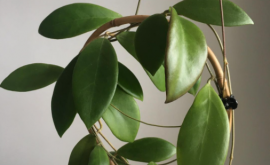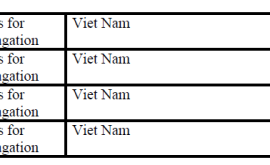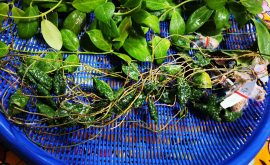THE TOP 5 HOYA CARE MISTAKES
According to the article of stamenandstemblog.com
Over the past year, I’ve collected quite a few Hoya species. Hoyas are tropical succulents native to Asia and Australia, and the genus includes over 300 species and even more hybrids and cultivars! Hoyas in general are known for their thicker, succulent-like leaves and waxy flower clusters (also known as umbels). They are in the family Apocynaceae and subfmaily Asclepiadoideae, which makes them related to Dischidia and common milkweed. Now, the world of Hoyas is fascinating to me and I could go on, but this post is all about common misconceptions in Hoya care. I am by NO MEANS an expert – especially since I’ve only been growing them a bit over a year. But I seem to have a natural knack for them and want to share my trials and errors with anyone who might be getting into Hoyas. You’ll find quickly that they’re rather “addictive” and it’s easy to get caught up in collecting them! That said, I will stress again — I’m not an expert! Just sharing my experience with you here. I’ve killed a few, but kept most of ‘em alive, so are the top 5 Hoya care mistakes and how to correct them!

1.) Assuming all Hoyas are created equal in their care needs –
While it’s true that many Hoyas require similar care, like I mentioned above, there are over 500 species, cultivars, and hybrids of Hoyas from all parts of the world. When you start to collect different Hoyas, research their various needs. Some like hot and humid, some like cooler temps and can tolerate dry air. Some like to dry out a bit, and some like a good amount of water. As a rule of thumb: Hoyas with thicker leaves are more drought tolerant and Hoyas with thin leaves tend to be on the thirsty side. And there are many different factors for blooming, from light, maturity, roots, and temperature! Vermont Hoyas is a personal favorite resource, and there are many informative Hoya groups on Facebook.
[woorousell id=”8692″]
[ez-toc]
Even if a particular Hoya species likes to stay on the moist side, a well-draining substrate is KEY and is possibly more important than anything else when caring for Hoyas. A standard cactus/succulent soil can work in a pinch, but I’ve found that even soils formulated for succulent-like plants still aren’t well-draining enough and need amended. That said, I like to use Fox Farms or Black Gold soil heavily amended with perlite, charcoal, and pine bark. I recently switched over to using coco coir in place of bagged potting soil and so far it’s going well. Some Hoya growers grow solely in pine bark, semi-hydro using expanded clay balls, use sand to amend… the possibilities are endless. All that matters is that the substrate is fast draining. Otherwise, the Hoyas could suffer from root rot, and healthy roots are essential to Hoya growth and flowering.
[ez-toc]
This kind of ties in the the above advice of using a fast-draining mix. The reason a well-draining substrate is important is that it can help ameliorate overwatering. Even if a Hoya prefers a moist medium, they’re still sensitive to overwatering. Make sure to let the substrate dry down enough between waterings, don’t let the Hoya sit in water (like a tray), and don’t plant it in a pot that is too big. In fact, a snug pot not only helps prevent soggy roots, it can sometimes aid in blooming.

[ez-toc]
When people first get into the world of Hoyas, they are often surprised to learn that Hoyas LOVE humidity. In fact, for some species, humidity is absolutely essential to their growth. Hoyas hail from tropical and subtropical regions where it’s quite humid – they are not desert-dwelling succulents. Humidity can really help speed up Hoya growth, which is infamously slow for many species (I’m looking at you, Hoya kerrii variegata). In fact, I’ve found that Hoyas can still grow fast in more moderate light if the humidity is high. Now, with all that humidity, fungus can often be a problem, which is why good air flow is important. Crowding too many Hoyas together with not enough space in between them, or stagnant humid air are no-no’s. Space your Hoyas out more (I know, it’s hard when you have a lot of plants

[ez-toc]
Now, this seems like it should be the most obvious care tip, but many folks make the mistake of thinking Hoyas are lower light plants. They’re really not. Some non-variegated species and many H. carnosa cultivars can absolutely handle more moderate light from an East-facing window (northern hemisphere) or even right in front of a north-facing window. But one of the worst things you could do for a Hoya is stick it in a corner or on top of a dark bookshelf. Think about where Hoyas originate from and how they grow – they’re in tropical climates, growing up trees. So they need that bright, dappled light. If you’re growing Hoyas indoors, light from a west or south-facing window is ideal. I am using T5 HO lights this winter and they come highly recommended by many growers. Hoyas can definitely benefit from artificial light. Outdoors, diffused light is best and too much direct sun can cause the leaves to fade and yellow. Keeping the light high not only allows the Hoya plant to grow better, it also helps keep the soil from staying too damp. As as we all know, damp potting medium with Hoyas is a no-no!




